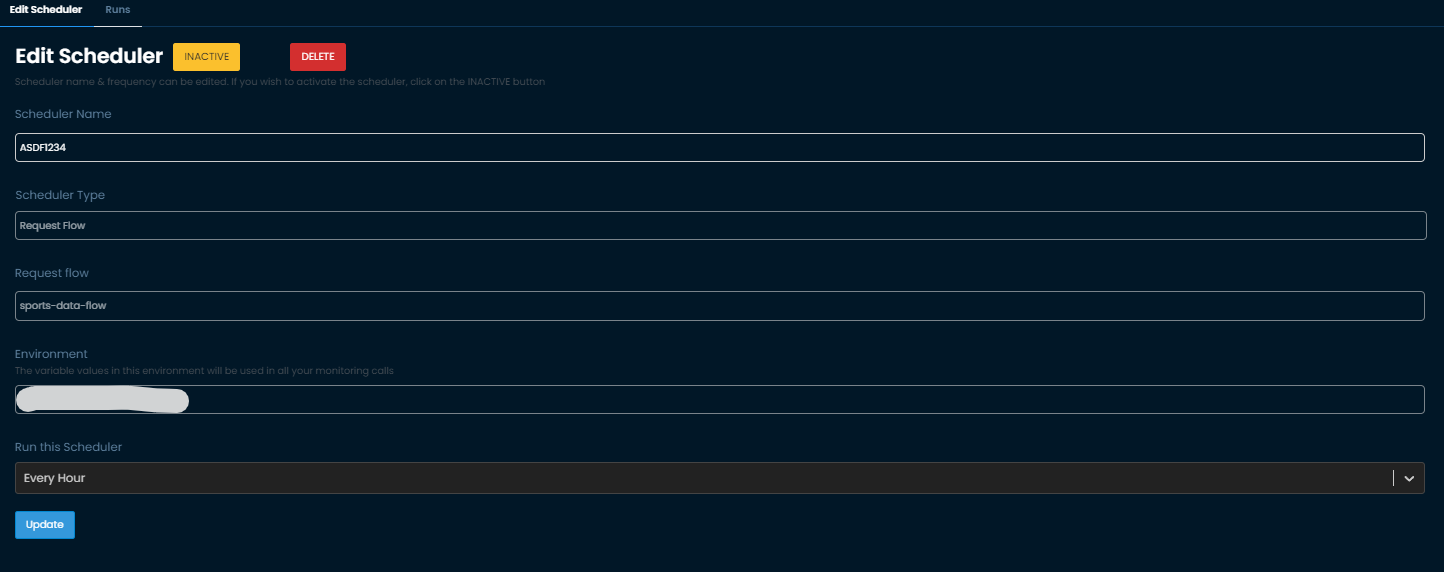Monitoring (Health Checks or Collections or Request Flows)
Overview
Monitoring allows you to automate the execution of request flows and health checks, ensuring your APIs and systems are running smoothly. This section provides details on creating and managing monitoring configurations.
Creating a Request Flow or Health Check
1. Create a Flow
- Define the required nodes (requests) and save them as a flow.
- These flows can then be selected from the dropdown for scheduled execution.
2. Health Check
- Typically involves a single URL or node.
- Used to verify the health status of a specific endpoint.
Setting Up Monitoring
Monitoring runs periodically and executes all requests in the flow, notifying you with test results. The following options are configured during setup:
1. Monitoring Name
- Purpose: Identify and manage each monitoring instance easily.
2. Monitoring Type
- Purpose: Define what kind of monitoring it is.
- Options:
- Health Check: Single endpoint validation.
- Request Flow: Sequential execution of multiple requests.
3. Request Flow
- Select the appropriate saved flow from the dropdown.
4. Environment
- The environment in which the monitoring will run.
- Variables from the selected environment will be injected into all requests.
5. Run Frequency
- Define how often the monitoring task runs.
- Options:
- Every Minute
- Custom Intervals
📊 Monitoring Management
Active
- Monitoring is currently running at defined intervals.
Inactive
- Paused state; no executions take place.
Delete
- Permanently removes the monitoring config.
- Note: This cannot be undone.
📋 Example Configuration
plaintext
Monitoring Name: API Health Check
Monitoring Type: Health Check
Request Flow: Health Check Flow
Environment: Production
Run this Monitor: Every Minute
Monitoring ensures continuous API visibility and can act as an early warning system when APIs go down or behave unexpectedly. Perfect for uptime checks, smoke testing, and workflow validation.
